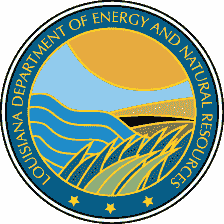Office of Coastal Management
Unprecedented Consensus: COAST 2050 PLAN APPROVED BY STATE WETLANDS AUTHORITY, CWPPRA TASK FORCE, 20 COASTAL PARISHES
BATON ROUGE – In an unprecedented joint meeting this week of the State Wetlands Authority and the CWPPRA (Coastal Wetlands Protection, Preservation and Restoration Act, or Breaux Act) Task Force, the Coast 2050 Plan strategies and habitat objectives were approved. The Coast 2050 strategies and the model of parish involvement used in the planning process have been unanimously approved by all 20 coastal Louisiana parishes.
“These endorsements are historic ones for Louisiana. Never before has there been this kind of consensus on strategies to stem our wetlands losses,” Louisiana Department of Natural Resources (DNR) Assistant Secretary for the Office of Coastal Restoration and Management Katherine Vaughan said. “Endorsements of this plan have been coming in at a rapid pace, from environmental groups, concerned citizens, and government officials on every level. It shows the momentum building on many fronts to take decisive and immediate action to save our coast.”
Carlton Dufrechou, executive director of the Lake Pontchartrain Basin Foundation, recently wrote in endorsing the plan, “The Foundation applauds DNR’s efforts in developing the Coast 2050 Plan...and we urge that the model of local involvement be adopted for any amendments to the plan”. The Coast 2050 Plan also received a strong endorsement from the Coalition to Save Coastal Louisiana.
The Coast 2050 Plan, developed in partnership with the public, provides a technically sound strategic plan to sustain Louisiana’s coastal resources and provides an integrated multiple use approach to ecosystem management.
Dr. Bill Good, supervisor of DNR’s coastal restoration division, said, “Louisiana can be known for coastal restoration effectiveness or for coastal land loss.” Good said the state has already lost 1500 square miles of its wetlands and will lose another thousand square miles by the year 2050.
According to Good, watershed structural repair, such as restoration of ridges and barrier islands, and watershed management, such as river diversions and improved drainage, are the main strategies of the plan. “It’s important to note that this process did not view the number of coastal wetlands acres saved as the only priority, but also considered other resources such as roads, levees, fish and wildlife resources, public safety, and navigation in making recommendations,” Good said.
The Louisiana Department of Natural Resources, the Governor Foster’s Office of Coastal Activities, and the five federal Breaux Act partner agencies spearheaded efforts to involve parish and local governments and the public to actively participate in the planning process. Federal, state and federal representatives began work on the plan in May 1997 and since then public input was received at 65 separate meetings.
DNR Secretary Jack Caldwell said, “I’m proud to be part of an administration that not only has reached out to our federal and state partners, but also has provided a key role for parish and public participation in the planning of our coast for future generations.”
The plan is in the final stages of completion and will be finalized by its December 22, 1998 deadline. Once the plan is finalized, the Breaux Act Task Force, the State Wetlands Authority, and the Department of Natural Resources Coastal Zone Management Authority will establish it as a unifying strategic plan of action. It will become the Breaux Act Restoration Plan and Louisiana’s overall strategic coastal plan.
The following parishes provided written resolutions of support: Ascension, Assumption, Cameron, Calcasieu, Iberia, Jefferson , Lafourche, Livingston, Orleans, Plaquemines, St. Bernard, St. Charles, St. James, St. John the Baptist, St. Martin, St. Mary, St. Tammany, Tangipahoa, Terrebonne, and Vermilion.
For more information, please contact DNR Communications:
Sidney Coffee at 225-342-4844 or Phyllis Darensbourg at 342-8955.
